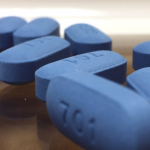 Levels of Selzentry (maraviroc) in vaginal and rectal tissues following a single dose were not high enough to be effective as pre-exposure prophylaxis (PrEP) in a recent study. While research of daily dosing of the HIV entry inhibitor as PrEP is ongoing, this study may have bearing on intercourse-based dosing strategies of the drug.
Levels of Selzentry (maraviroc) in vaginal and rectal tissues following a single dose were not high enough to be effective as pre-exposure prophylaxis (PrEP) in a recent study. While research of daily dosing of the HIV entry inhibitor as PrEP is ongoing, this study may have bearing on intercourse-based dosing strategies of the drug.
Researchers conducted an open-label Phase IV pharmacokinetic/pharmacodynamic study of Selzentry levels in vaginal and rectal tissues following a single dose. They presented their findings at the 2015 Conference on Retroviruses and Opportunistic Infections (CROI) in Seattle.
The study included 29 HIV-negative men and 25 HIV-negative women. They were divided into five groups: One group received a placebo, and had bodily fluid and tissue samples taken two hours later; the other four groups had bodily fluid and tissue samples taken two, four, six or 12 hours after taking Selzentry. Then, four weeks later, all the participants took another single dose. Those in the placebo group had samples taken after 24 hours, and those who took Selzentry had samples taken after 24, 36, 48 or 72 hours.
The drug proved safe and well tolerated, with no side effects. However, the researchers found that the single dose of Selzentry provided no apparent protection against HIV, despite the fact that high concentrations of the drug were seen in vaginal and rectal tissues four hours after the dose.
To read the aidsmap story, click here.
To read the conference abstract, click here.
To view a webcast of the conference presentation, click here.
Advertisement
Advertisement
Advertisement






Comments
Comments